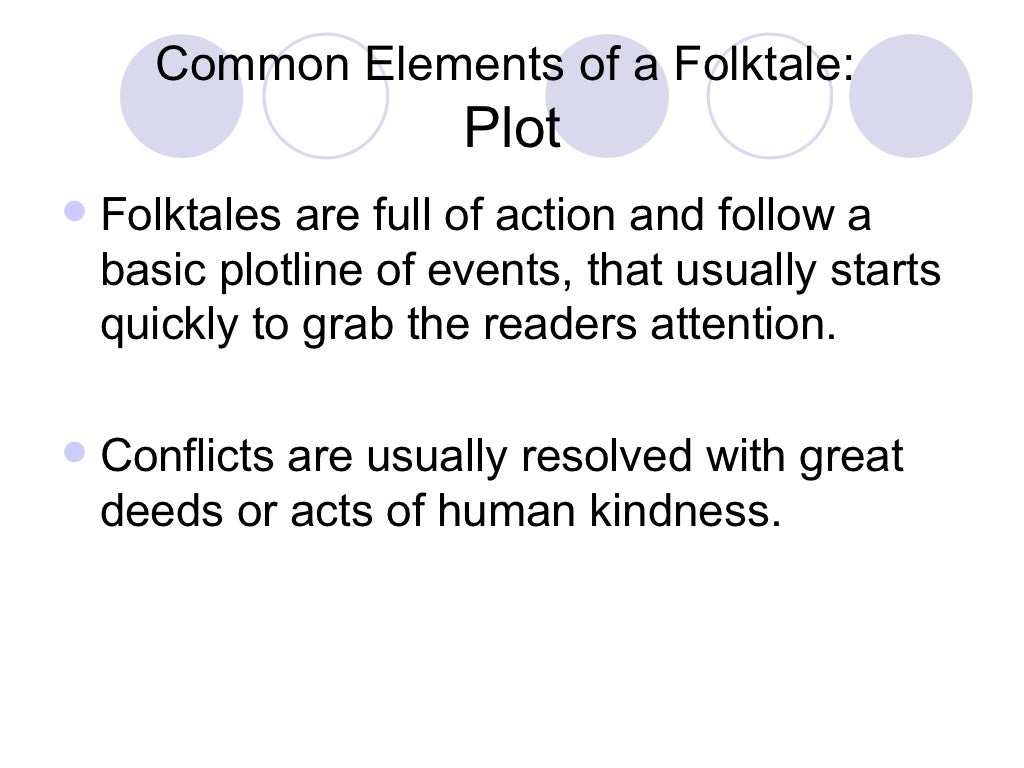

Perhaps the most universal of fairy tales is Cinderella, with some 1,000 versions extant. Many countries have stories following similar themes: foolish people who do foolish things virtues such as humility, kindness, honesty, and hard work and the power of love and kindness. They are often formulaic, for example, "Henny Penny" or "The Sky is Falling In" the chain tale, based on numbers, objects, or events the dialogue pattern and the accumulative stories as in "The House That Jack Built." Folk themes may be universal in nature. Folktales include epics, ballads, legends, folksongs, fairy tales, myths, and fables. Because it has been handed down through the ages, its origin often is lost. Since it is told by many storytellers, it has differing versions or variations. It is a traditional story of a particular group of people and follows a basic design. Want to know more? See how folklorists define folklore.A folktale may be defined as a tale of the people, a short, fast-moving oral or written adventure story perhaps of a comic or romantic nature. The word “folklore” names an enormous and deeply significant dimension of culture. Folklore asserts group identity, challenges cultural norms, and provides examples for ways of living a good life. Local knowledge often responds to, augments, and fills the gaps in between its own understanding and knowledge created by larger, more dominant, or mainstream groups. These ways of believing and knowing are circulated among small groups of people.

Most folktale examples how to#
Folklore can be found at your job (water cooler jokes or the right times to plant and harvest), in your home (your family’s recipe box or the quilt on your couch), or on the internet (the memes you scroll through or the emojis you use instead of words).Įvery group with a sense of its own identity shares, as a central part of that identity, folk traditions–the things that people learn to do largely through oral communication and by example: believe (religious customs, creation myths, healing charms), do (dance, make music, sew clothing), know(how to build an irrigation dam, how to nurse an ailment, how to prepare barbecue), make (architecture, art, craft, music), and say (personal experience stories, riddles, song lyrics). New ways of commemorating death in a pandemic that alters our common rituals of honoring life (like the Zoom Funeral): folklore. Street art to commemorate George Floyd protests: folklore. Folklorists are active in all areas of our society, studying topics such as education, healthcare, poverty, and immigration. It is a central, every-day part of life and how we make sense of the world today, and it is at the heart of all cultures–including whatever culture we call our own–throughout the world. Folklore is a fundamental part of what it means to be human.įolklore covers a wide range of topics, including issues in the news, such as fake news, cryptozoology, legends, holidays, internet memes, traditional and world music, and the supernatural. Often –but certainly not always –rooted in the past, folklore is one of the ways we share with each other the things we see as vital and important. In the United States at least, we often think about “folklore” as something untrue (“Oh, that’s just folklore!”) or something old fashioned that’s no longer a regular part of everyday life (“nobody does that stuff anymore”).īut if you think about it a little differently, folklore is and does so much more!įrom the perspectives of the people who study folklore and partner with communities to present and preserve it, folklore is one of the many ways we communicate who we are.

While folklore can be bound up in memory and histories, folklore is also tied to vibrant living traditions and creative expression today.

It includes the art, stories, knowledge, and practices of a people.


 0 kommentar(er)
0 kommentar(er)
